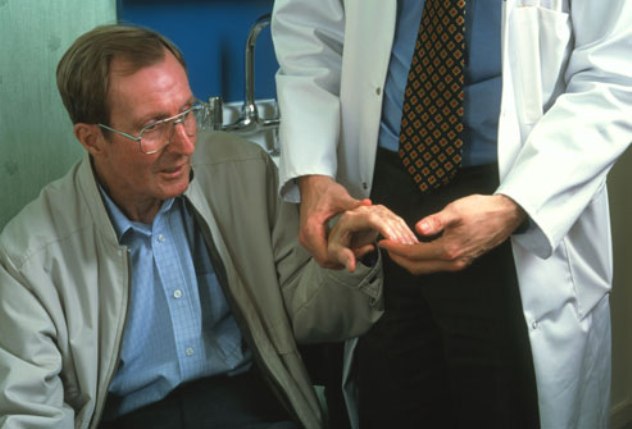Learn Bradykinesia definition, diagnosis, causes, symptoms, and treatment. It is a medical condition which is characterized by slow motion of movement of the patient. If a person faces difficulty while moving, its most probably due to this medical condition.
Bradykinesia, itself is not a reason behind the slow movement rather is considered as a symptom of some other underlying disease or disorder. Individuals affected by bradykinesia tend to elicit reduced mobility as well as a slow movement of the muscular motions.
Hypokinesia is another medical ailment most often be confused with Bradykinesia symptoms, wherein the affected person also experiences reduced bodily motions.
But to differentiate the both from one another is not a big deal. One can do it easily because hypokinesia has more to do with problems in commencing a movement whereas bradykinesia refers to the speed of the motion and not to motion initiation problems.
Bradykinesia occurs suddenly and the affected person may feel increasingly stressed due to the fact that his independence is slowly getting declined due to the disability. But it is pretty possible that an individual is suffering from both diseases at the same time. If you are not sure whether the condition you are suffering from is Bradykinesia, consult your doctor.

Bradykinesia Definition, Diagnosis, Causes, Symptoms, Treatment
Continue to read if you want to know more about Bradykinesia, like what could e the possible reasons and the available treatment.
Bradykinesia Definition
According to oxford journal of brain diseases, the defination of bradykinesia is:
Bradykinesia is slowness of movement as one of the cardinal manifestations of Parkinson’s disease.
Bradykinesia Causes
As discussed above, mostly bradykinesia occurs as a symptom of some other underlying condition. Thus, if an individual is diagnosed with bradykinesia then there are increased chances that the person has any of the many disorders associated with bradykinesia.
- Parkinson’s disease is the most apparent cause of this medical condition.
- Any kind of central nervous system malfunction, since in this condition, basal ganglia section of the brain and other parts of the brain are not communicating or transmitting signals in a normal manner.
- In some cases, intake of anti-psychotic medicines are also found responsible for triggering episodes of bradykinesia. The anti-psychotic drugs induce a sense of calm and significantly slow down the bodily movements.
Bradykinesia Symptoms
One of the most common symptoms of bradykinesia is the slowness of movement, that its name also depicts. If you have this symptom, it could be there for two different reasons, like you may have another disease and as a front end problem, this symptom appeared or it may occur on its own. So following are some symptoms:
- You may face difficulties in finishing a particular movement after initiating it since it has adverse effect on the basal ganglia, which is a section of a brain that is involved in the management and control of motor movements and motor learning.
- Bradykinesia can itself be a symptom of Parkinson’s disease, but at its early stages, it may be sometimes difficult to diagnose.
- Tremors and increased rigidity
- Muscular or generalized weakness
- Decrease in arm swing or other minor changes when walking
- Slowness in initiating a movement
- Incorrectness of the movements
Bradykinesia Diagnosis
Bradykinesia diagnosis is document under ICD-9 Code 332.1 Secondary parkinsonism and ICD-10 COde G21.9. Bradykinesia diagnosis is made usually by the doctor with a dedicated motor examination. If physician looks for a decrease in the arm swing and other subtle changes. For instance, micrographia, reluctance in starting a muscular movement, and diminished rate of blinking.
Monotonous or dull speech can also be one symptom. Sometimes, the condition may be confused and misdiagnosed as depression. In simple words, it takes more time and effort to complete daily tasks, which can result in fatigue, if someone is suffering from this medical condition.
Bradykinesia Treatment
Unlike other problems of the nervous system, surgery is generally not used to treat bradykinesia. The use of deep brain stimulation therapy as a treatment option is, however, gaining more acceptance.
- Restorative therapy and neuro-protective therapy are two treatment options that can help alleviate the condition. In restorative therapy, the lost neurons are generally replaced through transplantation of normally functioning embryonic cells into the pathways of the nervous system.
- While Neuro-protective therapy is aimed at slowing down the progression and degeneration of bradykinesia via causing interferences in the process of nerve cell deterioration.
In addition to these major therapies, following therapies are also used for the treatment of bradykinesia :
- Regular exercise and stretching can help to strengthen muscles and improve flexibility and mobility
- Physiotherapy as it helps with muscle cramps
- Speech and language therapy helps to keep facial muscles flexible. Complementary therapies
- Acupuncture or taking a magnesium supplement have been helpful for some people in reducing rigidity
Tips for Treatment of Bradykinesia
If you want to get relief for some time and immediately before you go to doctor, then following tips may help:
- Avoid multi-tasking, only in this way you can minimize the mixed signals which are being transmitted to and fro from the basal ganglia. Focus on just one task at a time.
- Use walking stick to prevent any kind of injuries that may occur due to falling.
- If you are taking anti-psychotic medicines, then consult the doctor, he may prescribe alternative medications.
 Health & Care Information
Health & Care Information 

